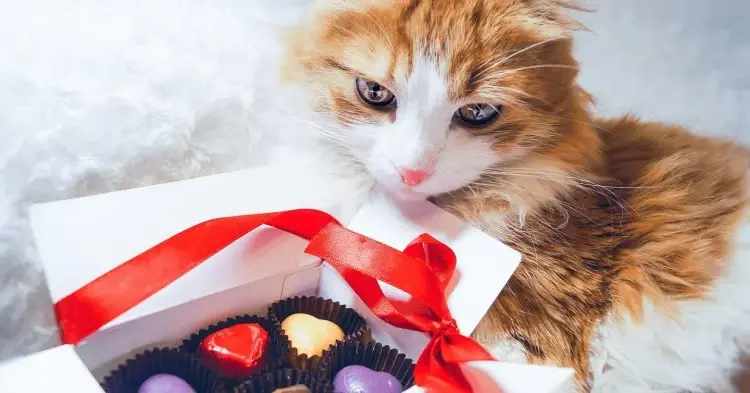What I learned from the tales of my childhood is that cats love fish and that they are the natural and eternal enemy of the mouse. The cat’s hunting nature puts it on the path towards rats, not only to eat them, but also to satisfy its instinct. In the meantime, it is tempting for the furry ones to “sneak” into the menu some of our leftovers from the table and other treats. These novelties can disturb the cat’s digestion and that’s why we have to be careful with the foods that can be harmful to them, some of them being even toxic. Find out about the toxic food for cats that your furry friend should stay clear off!
Why avoid certain toxic foods for cats?
The first thing that can drive a cat owner to experiment with food is their budget. The second is the wide variety of brands. There are so many companies producing cat food that it took me quite a while to be able to pinpoint the best one. In the end, I opted for the Whiskas packets that my cat swallows with an appetite to envy. However, I notice that my little friend gets bored very quickly. Hence, I am tempted to diversify its menu. Since I know about the harmful foods for cats, I am very careful. Why you ask? All humans have their own food preferences and digestive peculiarities. The same goes for animals! Felines, too, can be infected with viruses, receive arrhythmia, cramps, and muscle tremors. Along with toxic plants in the garden, we must cross out a long list of foods that are harmful to the little furry ones.
What is the cat’s favourite food to eat?
Maybe, your experience is different from mine! I will tell you what my cat (by the way, it’s a “he”) prefers to eat. As I wrote in the previous paragraph, “Jimmy”, (that’s his name), is crazy about the cans and bags of Whiskas. But after the first five, he starts to ignore them. So I’m confused, and I start to look for something to replace them with. Jimmy doesn’t like dry food, which is why I think he’s very fluffy, and that’s completely my fault! Another thing that Jimmy likes is fried liver and fried meatballs. He has no problems after eating them. Cats usually eat small portions, and this is a good example for us humans!
In short, the preferred food for cats is meat, as they are carnivores and their bodies require animal protein. Although dry food is the healthiest for them, it is not in the list of preferred foods for all felines. I guess it depends on the environment: whether the cat is raised in an flat or is free to roam in the garden.
Toxic food for cats: What they shouldn’t eat?
An overview of harmful foods for cats gives information about the most toxic ones.
A vegetarian soup of onions, garlic and other vegetables, which is healthy and detoxifying for us, can damage the cat’s red blood cells and lead to anaemia. Signs such as excessive lethargy, weakness and reduced appetite, pale gums and orange to dark red urine should be taken into consideration and may prompt a visit to the veterinarian.
As in humans, eating raw eggs or raw meat can lead to Salmonella or E. coli poisoning. Symptoms of illness vary but can include vomiting, diarrhoea and lethargy. More bad news! Both Salmonella and E. coli can be transmitted to humans, so the simple act of handwashing is good prevention. Raw eggs contain an enzyme that can cause skin and fur coat problems. As for bones, don’t give your cat raw bones for fear of choking or hurting its digestive tract.
Say not to sweets, grapes, and lactose!
You may know that any food containing sugar is deadly for dogs, because diabetes is not only a human concern. For the same reason, a cat should be kept away from sweets, chocolate, and cocoa. Chocolate contains substances called methyl xanthines, which can cause vomiting and diarrhoea, elevated body temperature, muscle tremors, abnormal heart rate, abdominal discomfort, increased thirst and seizures. As a general rule, dark chocolate is more toxic than milk and white chocolate.
Alcohol, raw pasta, fresh or dried grapes may seem absurd to you, but you should be warned. Ingestion can cause vomiting, diarrhoea, tremors, disorientation, breathing difficulties, coma, and even death.
The image of a cat drinking milk is common. Even if your cat likes to drink milk, it’s not necessarily good for them. Because of the difficulty in digesting lactose, a feline may suffer from an upset stomach or diarrhoea. But how is this possible, if cats are mammals? This is because kittens only drink milk from their mothers for a few weeks after they are born, so their digestive system is often not able to handle a reintroduction to lactose.
As for grapes, it is not clear why their consumption causes renal failure, which manifests itself in repeated vomiting and hyperactivity.
Also read: Can Dogs Have Cucumbers with Skin? Find Out Now If They Are Safe!
How to prevent cats from eating harmful foods?
Quite simply, by keeping toxic food that is dangerous to cats out of their reach, as well as ensuring that your cat eats a balanced diet.
- Curiosity is a natural trait for a cat, as some smells reach its little nose even through closed cabinets. Strong and stable locks will do the trick.
- Teach your cat “good manners”: Don’t climb on the eating table or working space! Don’t touch the food without permission! And most importantly, don’t give your cat the leftovers from the table!
- Also read, about why your cat is scratching the floor around its bowl after eating, and should you be worried?





